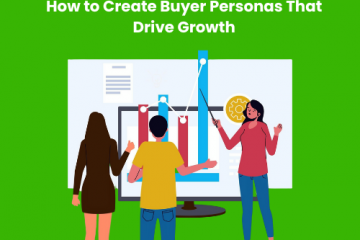6 Simple Tips to Optimize Your B2B Website for Better Lead Generation
There’s no question of whether you should optimize your website to generate leads. In fact, any branding agency will tell you that this is a B2B website’s primary purpose, along with generating brand awareness and boosting your image.
Unfortunately, simply deciding to generate more leads through your website isn’t going to magically make the website more effective in this regard. Throwing up a CTA here and there won’t exactly have you drowning in new customers overnight.
Instead, designers and marketers are forced to think strategically. For this post, we enlisted the help of some of the leading experts from the best San Diego web design companies, and we will go over a few quick tips that you can use to optimize your site for lead generation.

Image Source: unsplash.com
Lead Generation 101
Before you can truly understand how to optimize a website, you’ll have to gain at least some understanding of the process of lead generation. If you are already familiar with this concept, don’t worry, we won’t go into too much detail.
So, what is it that turns a casual website visitor into a lead?
The lead generation process starts when a visitor clicks on a CTA (call-to-action) button on one of the site’s pages.
The CTA transports the visitor to a landing page that usually includes a form that we use to collect the visitor’s info. Once the form is filled out and submitted, the visitor is typically taken to a “thank you” page.
Now that we’ve covered our bases regarding lead generation, let’s get down to business.
6 Tips to Improve Lead Generation on Your B2B Website
There are various ways in which you can optimize your website for B2B lead generation. We’ve come up with a list of six we consider the most effective and most crucial. Take a look!

Image Source: unsplash.com
Determine Your Current State of Lead Generation
Benchmarking the current situation is essential regardless of the type of business project you’re embarking on. This enables you to track your success as you go and figure out the areas that need the most improvement.
Why would you modify your whole website when there might be several pages doing an excellent job of generating leads without you even realizing it.
To conduct a thorough audit, try to find out where most of your outreach and online traffic comes from. These are your lead generators, and here are some of the most common ones:
- Social Media — You may be generating traffic from users engaging in one of your B2B marketing campaigns on platforms like LinkedIn or Facebook.
- Email — Users might be clicking through to your site from an email newsletter or a B2B email marketing campaign.
- Blog Posts — Your highest-performing blog posts and guest posts can also generate loads of traffic.
- Live Chat — B2B traffic is often generated through users reaching out to your sales team or customer service through a live chat feature on your website.
Once you’ve determined the source of your traffic, you’ll want to ensure that the pages your visitors are landing on are doing all they can to spark interest in your products or services.
Let’s assume that your analytics tool (use Salespanel for B2B) tells you that most of your potential leads are coming to your website through inbound links from your LinkedIn campaign. In that case, you should focus on updating the pages they’re landing on and keep them engaged with your site.
Add long-form content to your most-visited pages, but put it behind a pop-up asking visitors to leave their contact information.
If you’re feeling extra confident, you can even put your most popular content behind a soft paywall, but be cautious with this strategy as you don’t want to alienate any potential leads.
Test Each of Your Existing Lead Generators
Online tools like website Grader help you evaluate your lead generation sources, providing feedback on how to improve your content, landing pages, CTAs, etc. This type of tool also allows you to compare your best-performing landing pages with those that may not be doing so well.
For instance, you could be getting thousands of visitors a week to Landing Page X but only converting 1% of them. At the same time, Landing Page Y could be getting only a few hundred visitors a month but converting 5–10%.
Your next step could be to compare the two and see how you can optimize Page X to get a similar conversion rate to Page Y.
Finally, you could run an internal report evaluating your CTA clicks, landing page visits, and thank-you page shares to find out which of these offers provides the best results. Then, you could prioritize this strategy and create more of your best-performing lead generators.
Promote Whitepapers or eBooks
Another efficient yet non-invasive approach to generating interest in your brand is creating blog content promoting a whitepaper or an eBook. This way, your visitors can learn more about a topic that has caught their attention while providing contact information in return.
It is always a good idea to pair up two online marketing concepts, provided you can do it efficiently. This approach, in particular, combines search engine optimization (SEO) and lead generation.
Through informative and educational blog content, you can develop the necessary page authority to rank your website on the first page of Google results. This is a considerable advantage in lead generation as organic B2B visitors who come to your website through a Google search often have problems that your product or service can solve.
First, conduct thorough keyword research on a topic relevant to your niche and write a number of blog posts focusing on this topic.
Next, write a piece of long-form content that delves much deeper into the subject matter, and present it in PDF form on your blog in exchange for your reader’s name, company, and email address.
Once you’ve emailed each user the resource they’re interested in, keep following up with them through kickback emails and newsletters, retaining their interest in the content as well as your brand.
Utilize a Live Chat Service
Live chat services are becoming more sophisticated each day. Not only that, but they have become less of a luxury and more of an expected feature, especially when it comes to B2B interactions. Not having a live chat service on your website could mean missing out on a powerful lead generation tool.
The website audit we mentioned earlier will help you with setting up live chat as well. It will show you which pages your visitors spend the most time on, enabling you to install a live chat service where prospects need assistance or information the most.
Having your sales team converse with your prospects allows them to collect insights into the audience’s opinion on your products and their needs in a casual manner.
It is also a good idea to integrate your sales team and your customer service team into your live chat, ensuring that your customers’ needs are addressed regardless of the turns the conversation ends up taking.
You can also use webinars, which offer a great chance to cross-sell and upsell your goods and services. The ActualTech Media’s programs help catch more webinar leads, making webinars running easy. They give visitors a full overview of your services and nudge them into making a purchase or signing up for a free trial.
Cater to Each User with Personalized CTAs
Having dynamic content on your site allows you to cater to the experience of each visitor. With this approach, each person landing on your website will see product options, buttons, images, etc., specific to their interests, based on the items they may have purchased before or the pages they’ve looked at.
This may seem like a bit of an unnecessary gimmick until you learn that personalized calls-to-action perform over 200% better than their basic counterparts. In other words, on-page personalization and dynamic content help your website generate more leads.
The reason for this is rather simple — people like to feel special. If you can show your customers that you’re in touch with their needs and interests and that you value their business, they are much more likely to stick around and engage in a conversation with your sales team.
If you want to get started with highly personalized data-driven website content, please read this article.
Nurture Your Leads
This article focuses on generating leads, but it is also important to remember that leads don’t magically turn into customers. A large number of leads means nothing unless you can convert them through a solid nurturing effort.
Start delivering valuable content to your B2B leads as soon as they fill out a form on one of your landing pages. If you’re inactive in your lead-nurturing strategy, they’ll quickly forget about you, and you should never let that happen.
Lead nurturing typically starts with sending relevant follow-up emails that present your prospects with informative content they are interested in consuming. Try to learn as much about your leads as possible while nurturing them — this will allow you to tailor your future offers to their interests and needs.
This Forrester report suggests that companies that actively nurture their leads have 50% more sales-ready leads at 2/3 of the cost compared to their non-nurturing competitors.
Generating and nurturing leads is crucial to the growth of your business. Using the simple and actionable tips outlined above, you can maximize your effectiveness in this process and never let promising website visitors slip through your fingers again.
Sell more, understand your customers’ journey for free!
Sales and Marketing teams spend millions of dollars to bring visitors to your website. But do you track your customer’s journey? Do you know who buys and why?
Around 8% of your website traffic will sign up on your lead forms. What happens to the other 92% of your traffic? Can you identify your visiting accounts? Can you engage and retarget your qualified visitors even if they are not identified?


